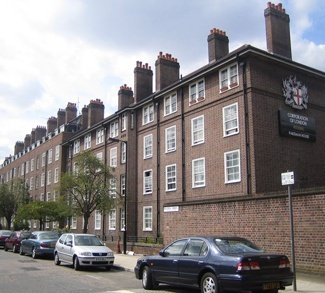The notoriously volatile London housing market has again prompted the dreaded ‘B’ word. The Office of National Statistics recently substantiated these fears, noting that London housing prices have increased 17% during 2013. While much ink has been spilled about whether the market is frothy or bubbly, the real issue is how to stop or pop the bubble. The Bank of England’s lack of leadership coupled with government policy has already provoked the beginning of a bubble. Only preemptive, systemic regulation will stop the bubble from popping.
Lopsided European and British growth has caused increased immigration to London. Although Germany has received much attention as a destination of EU immigration, London has absorbed the lion’s share of the UK’s European immigrants, fuelled by southern European countries like Spain and Italy. Young Britons move in droves as well. European and British immigrants tend to be young and to come from places where youth unemployment has remained in the double digits for years due to sluggish growth and a two-tiered labor market (although this is less the case for Britain). London also has the comparative advantage of being Anglophone in an economic union where 50% of the people speak English, compared to the 25% that speak German, a difference more apparent among the young.
Globally, increased political instability and economic sanctions have prompted oligarchs in Ukraine and Russia and the newly affluent in Asia to purchase housing in London. “Billionaires’ row” in north London is a prominent example. Tier 1 investor visas, which cost £1,000,000, have also seen a steady uptick in applications (roughly 880 have been granted in the past 4 years). These plutocrats also tend to buy entire flats, further limiting supply.
Most importantly, government policy has inhibited supply while also fostering demand. The Green Belt surrounding London constrains housing expansion outward. The London Plan limits housing development upward, albeit with certain exceptions like The Shard. Government taxes buildings rather than land, providing incentives for land speculation and holding while decreasing construction starts.
The controversial ‘Lend to Buy’ program has done the greatest damage. The program provides illiquid individuals mortgage guarantees of up to 95% of a house’s value. This has problematized the UK housing market. Although construction starts and home ownership have increased in low-growth areas of the UK (roughly 80% of new mortgages are for housing outside of London), it has incentivized risk-taking in London’s mortgage market. Londoners borrow at roughly an 8:1 ratio of loan to income. This ratio will increase as the economy continues to recover and these trends persist.
The Bank of England’s newly minted Prudential Regulatory Authority (PRA) has provided little guidance during this build up. Their suggestions to limit eligibility to lower valued housing or place maximums on loan-to-value or loan-to-income ratios have signaled potential future regulation, but are not presently enforced. Only larger, nationalized banks have adopted some of them. Lloyds and RBS have begun to curtail their already small share of London’s mortgage market through higher underwriting standards and lower acceptable ratios of loan-to-income.
This has left fewer banks willing to hold larger numbers of risky mortgages. Three – Barclays, Santander UK, and Clydesdale – have undertaken 50% of London’s mortgages in recent months, a trend that looks likely to continue. Small banks now hold high levels of mortgage debt, leaving them vulnerable to interest rate hikes.
As housing prices and debt levels continue to increase in London, the Bank of England’s governor, Mark Carney, has repeatedly confirmed that interest rates will not rise. The PRA will likely officially recommend policies to reduce Lend to Buy’s generosity and make it more targeted to outside of London and/or increase banks’ capital requirements.
However, until these policies become official and systemic, excessive debt will continue to be underwritten by a small number of small banks. When these policies do come into effect, mortgages already issued will be a ticking time bomb. If steps are not taken to systemically regulate London’s mortgage market, there will be massive, concentrated defaults when interest rates are raised. The longer the PRA waits, the more debt will be issued. By the time the Bank does act, these smaller banks may have become too big to fail, yet again.




